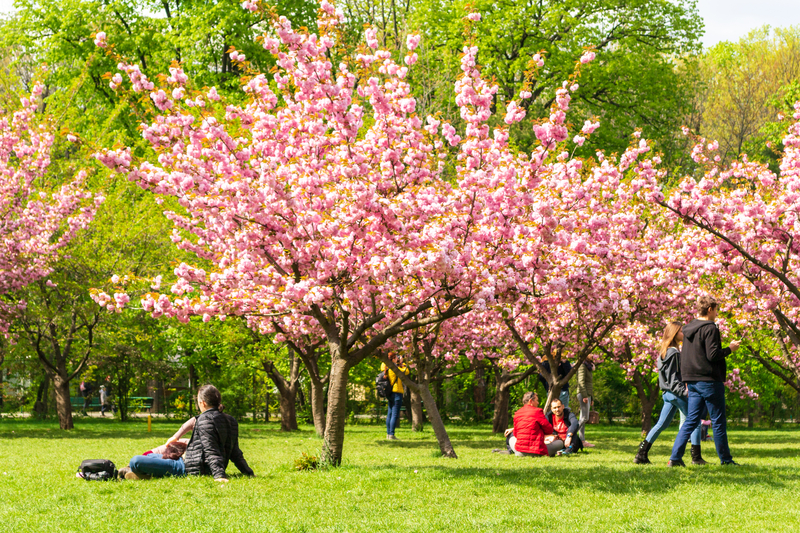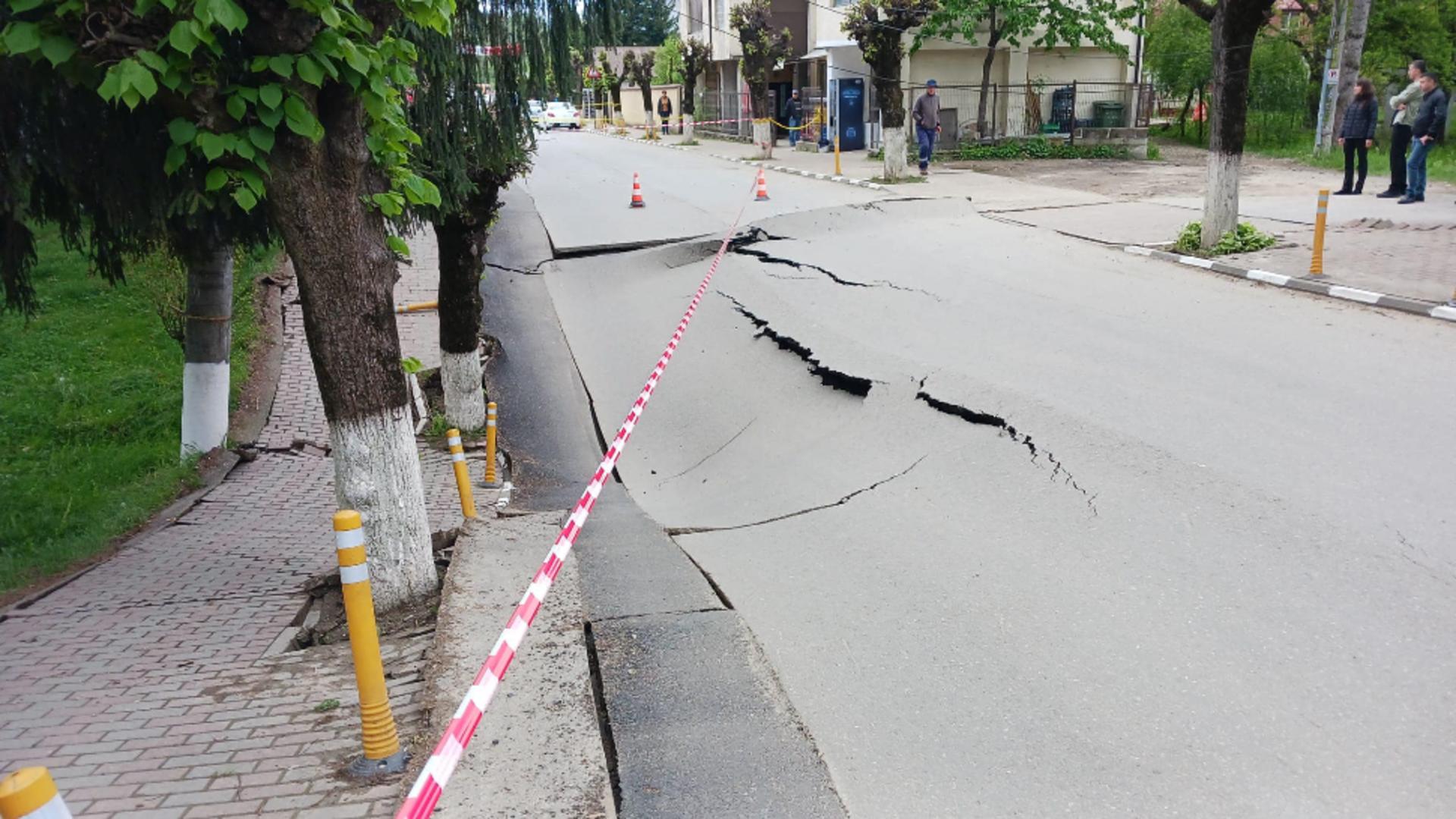Daffodils, peonies, and magnolia trees in bloom are part of the show nature puts on every spring. We outline below some suggestions for places to enjoy spring nature in and outside of the city.
The second largest park in Bucharest after Văcărești Nature Park, Regele Mihai I Park (former Herăstrău) is a favorite destination year-round but come spring it has one spot to admire the delicate display of the cherry blossoms. The Japanese Garden is where Hanami, the Japanese custom of enjoying the transient beauty of flowers, is celebrated. The garden was set up more than two decades ago and refurbished a few years ago with the support of the Embassy of Japan, which organizes here every year the Hanami event.
Also in the park, the four Expoflora pavilions hosting exotic flowers are set to reopen this May after undergoing refurbishment. The public will be able to see here a collection of plants from areas such as the Mediterranean, Indochina, or the Caribbean, Bucharest Mayor Nicușor Dan announced.
A complex ecosystem close to the Petricani Road, the Petricani Meadow is one of the five natural areas of Bucharest that the Văcăreşti Nature Park Association is working to endow with a protected status. The meadow, covering some 15 hectares, is made up of herbaceous plants but also pines, poplars, ash trees or elm trees, and numerous shrubs. The association has already opened a visiting trail in the area, which offers food and shelter to various species of insects and birds. The meadow also helps to mitigate the ‘heat island’ effect in the city while developing faster than a newly planted trees.
The Dimitrie Brândză Botanical Garden in Bucharest is another choice for a spring visit. Located in the Cotroceni neighborhood, it hosts more than 10,000 species of plants. In spring, visitors can see numerous varieties of some of the star flowers of the season: daffodils, peonies, lilacs, tulips, and more. The garden also has sectors of local, spontaneous flora, where works are carried out less frequently or not at all, thus allowing for local biodiversity to be preserved. A list of several botanical gardens in the country and what they have to offer visitors is here.
The Botanical Garden in Bucharest Photo: Cateyeperspective | Dreamstime.com
The warm January and February months have brought the magnolias’ bloom season earlier and soon they will take over the city streets. The Map of Magnolias, a project started four years ago, aims to spotlight the magnolias in Bucharest but also “the beauty in every corner of the city” and make the public more aware of it. Although the map doesn’t aim to be exhaustive, it is good place to start for anyone interested in a flower-themed walk. The map, available here, currently covers more than 1,000 pins. Meanwhile, a distinct project available here, maps the wisterias in the city.
Photo: Ifeelstock | Dreamstime.com
The peony was declared the national flower in 2022, and five species of peony can be encountered in nature reserves protected by law, namely Paeonia peregrina, Paeonia tenuifolia, Paeonia triternata, Paeonia mascula, Paeonia officinalis, ssp. Banatica. Another three cultivated species with numerous varieties also grow in the country, according to a presentation from the University of Agronomical Sciences and Veterinary Medicine of Bucharest, which hosts a collection with more than 86 varieties of peonies at its Agronomie – Herăstrău campus – the I. Todor Botanical Garden. Elsewhere in the country, a well-known peony reserve is in Zau de Câmpie, close to Luduș, in Mureș county. The flower can also be encountered in Dobrogea’s Măcin Mountains and is celebrated at events in Comana, in Giurgiu county, or Târgu Bujor, in Galaţi, among others.
Wild peonies in a protected area near Enisala Photo: Tutye2001|Dreamstime.com
The much-celebrated daffodil can be seen in bloom in various glades in nature parks across the country. One spot to admire the flower every spring is Vlăhiţa, in Harghita county. The Daffodils Glade in Vlăhiţa is a protected area of some 20 hectares filled with the Narcissus stellaris type. Other flower species, such as the lady’s-slipper (Cypripedium calceolus), the Siberian iris (Iris sibirica), or the globeflower (Trollius europaeus) can also be encountered here. At the same time, a Daffodils Festival is scheduled this May in Vad, some 60 km away from Brașov. The protected area should see more flowers this year as the authorities have cleaned up the plot of land they own there, according to the mayor of Șercaia, the commune that encompasses the village of Vad.
A meadow of daffodils in Harghita Photo: Kutizoltan | Dreamstime.com
Those looking to see wildflowers can mark the arrival of spring in the Transylvanian Highlands, which host numerous meadows with spontaneous flora filling landscapes with color. Some of the flowers found here are the early purple orchid, the moorland spotted orchid, the pheasant’s eye, and the purple mullein. Willows, poplars, and alders also dot the region’s network of valleys and hills. Several trails and more ways to explore the area, which offers ample opportunities for wildlife and birdwatching, are listed here.
(Opening photo: The Japanese Garden in Bucharest by Mihai Neacsu | Dreamstime.com)
simona@romania-insider.com





